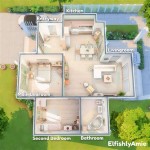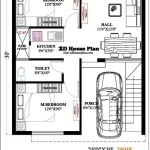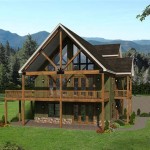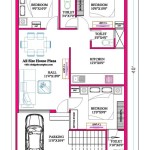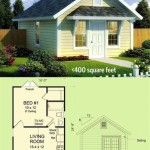Contemporary A-Frame House Plans: A Modern Take on a Classic Design
A-frame houses, characterized by their steeply angled roofs that meet at or near the foundation line, have long held a captivating allure. Originally popularized in the mid-20th century as affordable and easily constructed vacation homes, A-frames are experiencing a resurgence in popularity. This revival is fueled by a contemporary reimagining of the design, incorporating modern materials, innovative layouts, and a focus on sustainability. Contemporary A-frame house plans are no longer limited to rustic retreats; they are now being adapted as stylish and functional primary residences, offering a unique architectural statement and a connection to nature.
The inherent simplicity of the A-frame structure lends itself well to modern design principles. The clean lines, open floor plans, and ample natural light that are hallmarks of contemporary architecture are easily integrated into the A-frame aesthetic. Architects and designers are pushing the boundaries of the traditional A-frame, exploring new materials, spatial configurations, and energy-efficient technologies to create homes that are both visually striking and environmentally conscious.
This article will explore the key elements of contemporary A-frame house plans, highlighting the design considerations, structural aspects, and material choices that define this modern architectural trend. It will also examine the advantages and challenges associated with building an A-frame home, providing prospective homeowners with a comprehensive understanding of this unique housing option.
Key Design Elements of Contemporary A-Frame House Plans
Contemporary A-frame house plans distinguish themselves from their predecessors through several key design elements. These elements contribute to a more spacious, functional, and aesthetically pleasing living environment.
Open Floor Plans: Traditional A-frames often suffered from cramped and compartmentalized interiors. Contemporary designs prioritize open floor plans, maximizing the use of available space and creating a sense of airiness. The main living area typically encompasses the kitchen, dining room, and living room, allowing for seamless interaction and unobstructed views. This open concept is particularly effective in A-frames, as it enhances the dramatic effect of the soaring roofline and brings natural light deep into the interior.
Large Glazed Areas: Natural light is a crucial component of contemporary design, and A-frame houses are well-suited to incorporating large windows. Expansive glass walls, often spanning the entire gable end, create a strong connection to the outdoors and flood the interior with sunlight. These glazed areas not only enhance the aesthetic appeal of the home but also contribute to energy efficiency by providing passive solar heating in the winter months. Strategically placed windows and skylights further optimize natural light penetration and minimize the need for artificial lighting.
Modern Materials and Finishes: Contemporary A-frame designs embrace modern materials and finishes to create a sophisticated and durable living space. Exterior cladding options include metal siding, engineered wood, and concrete panels, offering a range of textures and colors to complement the surrounding landscape. Interior finishes often feature minimalist aesthetics, with smooth surfaces, clean lines, and a neutral color palette. Exposed timber framing, a characteristic feature of A-frames, is often retained and celebrated, adding warmth and character to the interior. High-quality fixtures and fittings, such as energy-efficient appliances and contemporary lighting, complete the modern look.
Loft Spaces and Mezzanines: The unique geometry of an A-frame house naturally lends itself to the creation of loft spaces and mezzanines. These elevated platforms can be used for bedrooms, home offices, or recreational areas, maximizing the use of vertical space. Mezzanines offer a visual connection to the main living area below, while also providing a sense of privacy and separation. Clever design can incorporate stairs, ladders, or even built-in storage to access these loft spaces, further optimizing functionality.
Structural Considerations for Contemporary A-Frame Construction
Building an A-frame house presents unique structural challenges that must be addressed during the design and construction phases. A thorough understanding of these challenges is essential for ensuring the stability, durability, and longevity of the structure.
Foundation Design: The foundation of an A-frame house is critical for supporting the weight of the roof and walls. The foundation design must take into account the soil conditions, climate, and the overall size and shape of the structure. Common foundation options include concrete slabs, crawl spaces, and basements. In areas with sloping terrain, a pier and beam foundation may be necessary to provide adequate support. Proper drainage and waterproofing are essential to prevent moisture damage and ensure the long-term integrity of the foundation.
Framing Techniques: The framing of an A-frame house typically involves a series of triangular frames that are connected to form the roof and walls. These frames can be constructed using traditional timber framing techniques or with engineered wood products such as laminated veneer lumber (LVL) or I-joists. The choice of framing material will depend on the desired aesthetic, budget, and structural requirements. Careful attention must be paid to the connections between the frames, as these are critical for resisting wind and snow loads. Metal connectors and fasteners are often used to reinforce these connections and ensure structural stability.
Insulation and Ventilation: Insulating an A-frame house can be challenging due to the limited wall space and complex geometry. Effective insulation is essential for maintaining a comfortable indoor environment and reducing energy consumption. Spray foam insulation is a popular choice for A-frames, as it can fill irregular cavities and provide a tight seal. Proper ventilation is also crucial for preventing moisture buildup and ensuring healthy indoor air quality. Ridge vents, soffit vents, and gable vents can be used to promote airflow and reduce the risk of condensation.
Structural Integrity: The inherent triangular shape of an A-frame provides excellent structural stability. However, large openings in the walls, such as windows and doors, can weaken the structure if not properly addressed. Reinforcing the framing around these openings is essential for distributing the loads and preventing stress concentrations. Structural engineers should be consulted to ensure that the design meets all applicable building codes and regulations. Regular inspections and maintenance are also important for identifying and addressing any potential structural issues.
Sustainability and Energy Efficiency in Contemporary A-Frame Homes
Contemporary A-frame house plans often incorporate sustainable design principles and energy-efficient technologies to minimize their environmental impact and reduce operating costs. These features not only benefit the environment but also enhance the comfort and value of the home.
Passive Solar Design: The large glazed areas that are characteristic of contemporary A-frames can be utilized to capture solar energy and provide passive heating in the winter months. By orienting the house with the glazed gable end facing south, homeowners can maximize solar gain and reduce their reliance on conventional heating systems. Overhangs and shading devices can be used to prevent overheating during the summer months. Proper insulation and thermal mass are also essential for storing and distributing the solar heat throughout the house.
Renewable Energy Systems: A-frame houses are well-suited for incorporating renewable energy systems such as solar panels and wind turbines. The steep roof pitch provides an ideal surface for mounting solar panels, maximizing their exposure to sunlight. Wind turbines can be located on the property to generate electricity, especially in areas with consistent wind resources. These renewable energy systems can significantly reduce the home's carbon footprint and dependence on fossil fuels.
Sustainable Materials: The use of sustainable materials is a key aspect of contemporary A-frame design. Engineered wood products, such as LVL and I-joists, are made from renewable resources and offer excellent structural performance. Recycled materials, such as recycled steel and reclaimed wood, can be incorporated into the construction to reduce waste and minimize the environmental impact. Low-VOC paints, adhesives, and sealants should be used to improve indoor air quality. Choosing materials that are locally sourced can also reduce transportation costs and support local economies.
Water Conservation: Water conservation is becoming increasingly important in sustainable design. Rainwater harvesting systems can be used to collect rainwater for irrigation and other non-potable uses. Low-flow fixtures, such as toilets, showers, and faucets, can significantly reduce water consumption. Landscaping with native plants and drought-tolerant species can minimize the need for irrigation. Implementing these water conservation measures can help reduce the home's water bill and conserve valuable resources.
By integrating these design elements, structural considerations, and sustainability measures, contemporary A-frame house plans offer a unique and appealing housing option for those seeking a modern, eco-friendly, and architecturally distinctive home. The resurgence of the A-frame is a testament to its enduring appeal and its ability to adapt to the evolving needs and preferences of homeowners.

A Frame Rising Modern Luxury House Plans

Modern A Frame House Plan With Side Entry 2007 Sq Ft

2 Bed Contemporary A Frame House Plan With Loft 35598gh Architectural Designs Plans

Plan 43500 Contemporary A Frame House With Loft

A Frame House Plans The Highland 4100 Normerica Timber Homes

The Most Gorgeous Rustic Contemporary A Frame Cabin In Lake Tahoe

Modern A Frame House Floor Plans

Cozy Winter Cabins A Frame House Plans And More Houseplans Blog Com

Large Modern A Frame Cabin Build Plans

7 Breathtaking Contemporary A Frame Homes Architectural Digest

